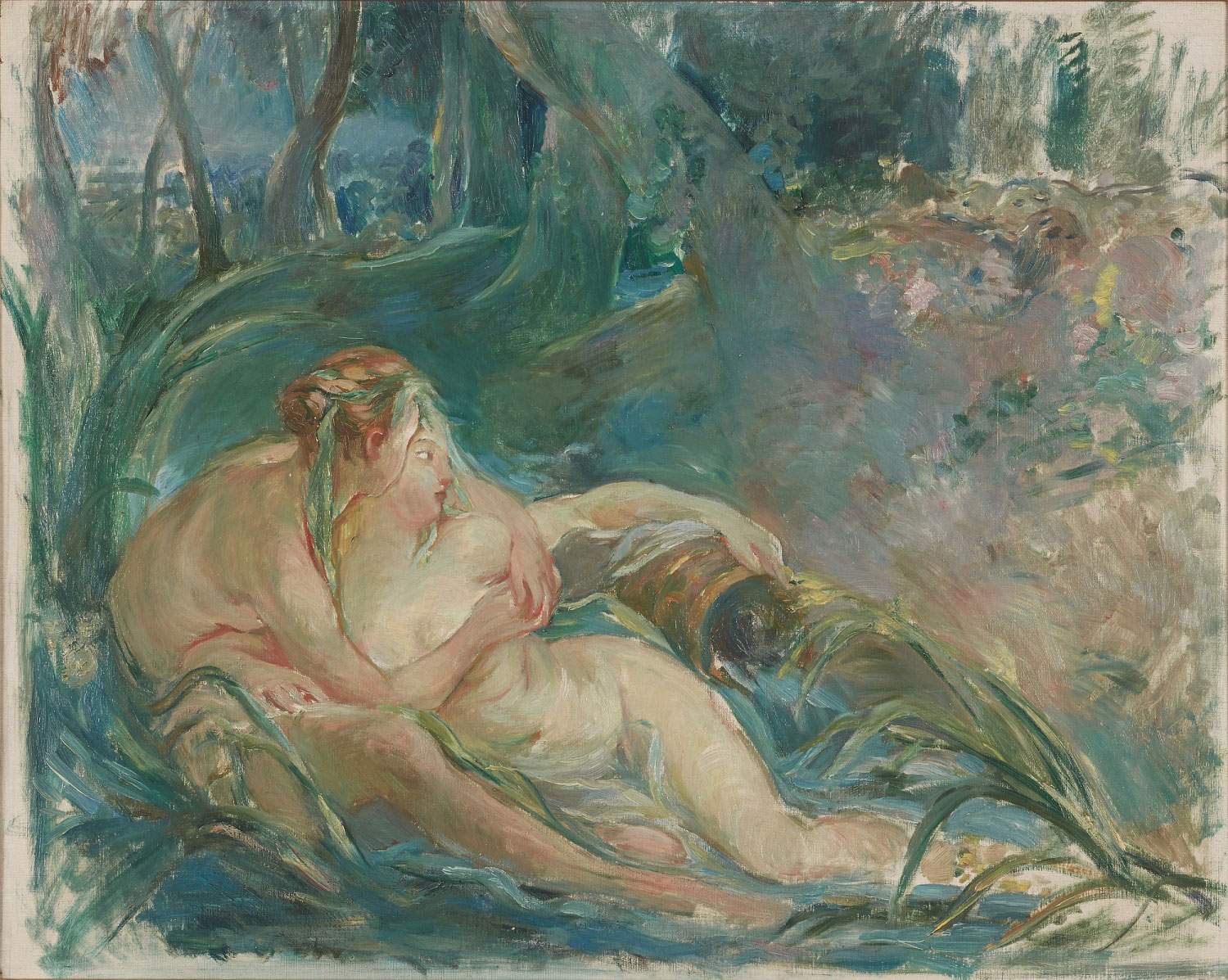The Musée Marmottan in Paris acquires a rare painting by Berthe Morisot with a mythological subject
An important purchase by the Musée Marmottan Monet in Paris, which secured a rare painting by Impressionist painter Berthe Morisot (Bourges, 1841 - Paris, 1895): it is a work with a mythological subject depicting Apollo revealing his divinity to the shepherdess Isse, dated 1892. The painting, taken from a homologous 18th-century painting by François Boucher with the same subject, was purchased for the museum by theAcadémie des Beaux-Arts - Institut de France (the entity that holds the ownership of the Musée Marmottan), which secured it for the sum of 212,000 euros in an auction at Freeman’s in Philadelphia, US: the initial estimate was 139-231 thousand euros. The canvas thus adds to the 83 works by Berthe Morisot that the Marmottan already owns: it is the world’s most comprehensive collection of works by Berthe Morisot, and the mythological painting is a significant addition.
Indeed, the work testifies to the painter’s interest in the art of the previous century, which in this painting Berthe Morisot “updates” according to her Impressionist filter. A sincere and vivid interest, which lasted throughout her career, since this Apollo belongs to the last phase of her production. The subject is taken from Ovid’s Metamorphoses and recounts the love between Apollo, god of the arts, and the shepherdess Isse: according to the tale, in order to conquer her, Apollo pretended to be a shepherd himself, only to reveal his divinity to her later. The work is also rare because only two works by Berthe Morisot d’après Boucher are known: the other is Venus Demanding the Arms of Aeneas from Vulcan, painted between 1883 and 1884 after a visit to the Louvre, and now held in a private collection.
However, of Boucher’s painting, Berthe Morisot depicts only one detail, and not even the main one: in fact, the painter shows only the two nymphs embracing each other in the lower left corner of the original composition, leaving out altogether the two protagonists, the god who, in all his beauty and with his quiver slung over his shoulder, shows himself to Isse, and the shepherdess who spreads her arms in a gesture of amazement, while around them a theory of putti celebrate and play. The work remained in the artist’s collections after his death, and ended up at auction following several passes between private collections. It was exhibited in 1896 at the major Berthe Morisot retrospective organized shortly after her death, and was then shown in 1907 at the Salon d’Automne. The last exhibition was even in 1943, on the occasion of a retrospective that the Musée de l’Orangerie devoted to the author.
In the photograph: Berthe Morisot, Apollo revealing his divinity to the shepherdess Isse, by François Boucher (1892; oil on canvas, 63.8 x 79.4 cm; Paris, Musée Marmottan)
 |
| The Musée Marmottan in Paris acquires a rare painting by Berthe Morisot with a mythological subject |
Warning: the translation into English of the original Italian article was created using automatic tools. We undertake to review all articles, but we do not guarantee the total absence of inaccuracies in the translation due to the program. You can find the original by clicking on the ITA button. If you find any mistake,please contact us.





























